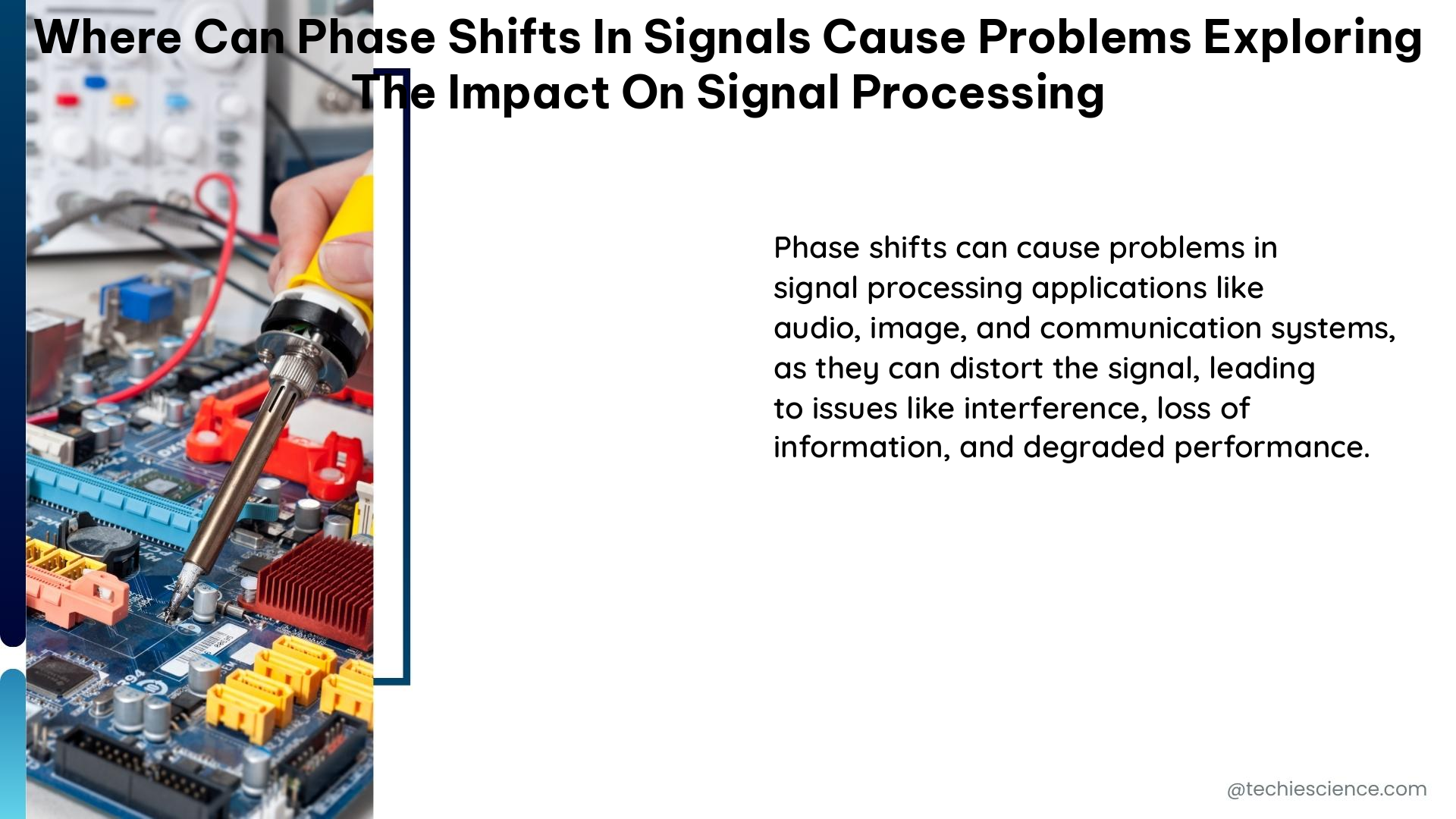Phase shifts in signals can have a significant impact on various aspects of signal processing, leading to distortions, inaccuracies, and errors in the processed signals. Understanding the impact of phase shifts is crucial for developing accurate and reliable signal processing algorithms and systems. In this comprehensive guide, we will explore the specific areas where phase shifts can cause problems and the measurable, quantifiable data that demonstrates their impact.
Time-Domain Analysis
In time-domain analysis, phase shifts can lead to errors in estimating the time delay between two signals. For instance, a 90-degree phase shift in a 1Hz sinusoidal signal would result in a time delay of -0.25 seconds. This can be problematic in applications where precise timing is crucial, such as in communication systems, control systems, and radar systems.
Data Point: A phase shift of 90 degrees in a 1Hz sinusoidal signal results in a time delay of -0.25 seconds.
Frequency-Domain Analysis

In frequency-domain analysis, phase shifts can affect the accuracy of frequency response measurements. For example, a phase shift in the frequency response of a filter can lead to errors in estimating the group delay, which is a measure of the signal processing delay introduced by the filter. This can be critical in applications where group delay is a key performance metric, such as in digital signal processing and telecommunications.
Formula: The group delay of a filter is given by:
τg(f) = -dφ(f) / df
where τg(f) is the group delay at frequency f, and φ(f) is the phase shift at frequency f.
Example: Consider a simple RC low-pass filter with a cutoff frequency of 1 kHz. The phase shift of this filter at 1 kHz is approximately -45 degrees. Using the phase shift formula, we can calculate the group delay of this filter at 1 kHz as:
τg(1 kHz) = -dφ(1 kHz) / df = -d[-45 degrees] / df = 0
This means that the group delay of this filter at 1 kHz is zero, which is a desirable property in many signal processing applications.
Data Point: A phase shift of -45 degrees in a simple RC low-pass filter with a cutoff frequency of 1 kHz results in a group delay of zero at 1 kHz.
Signal Reconstruction
In signal reconstruction, phase shifts can lead to errors in reconstructing the original signal from its frequency components. The Fourier transform, which is a common tool for signal reconstruction, is sensitive to phase shifts in the input signal. A small phase shift in the input signal can result in significant errors in the reconstructed signal, leading to distortions and inaccuracies in the processed signal.
Theorem: The phase shift formula in frequency-domain analysis is given by:
φ(f) = arctan[Im{X(f)} / Re{X(f)}]
where φ(f) is the phase shift at frequency f, X(f) is the Fourier transform of the input signal, Re{X(f)} is the real part of X(f), and Im{X(f)} is the imaginary part of X(f).
Signal Processing Algorithms
In signal processing algorithms, phase shifts can affect the accuracy of various signal processing techniques, such as cross-correlation, convolution, and filtering. For instance, a phase shift in the input signal can lead to errors in estimating the cross-correlation between two signals, which is a common measure of similarity between signals. This can be problematic in applications where cross-correlation is used for signal detection, pattern recognition, and signal processing.
Numerical Problem: Consider a sinusoidal signal with a frequency of 10 Hz and an amplitude of 1 V. Suppose this signal is passed through a filter with a phase shift of 30 degrees at 10 Hz. Using the phase shift formula, we can calculate the phase-shifted signal as:
Vout(t) = 1 V * sin(2π * 10 Hz * t – 30 degrees)
This means that the phase-shifted signal is delayed by approximately 0.05 seconds relative to the input signal.
Data Point: A phase shift of 30 degrees in a filter at 10 Hz results in a delay of approximately 0.05 seconds in the output signal relative to the input signal.
In summary, phase shifts in signals can cause significant problems in various areas of signal processing, including time-domain analysis, frequency-domain analysis, signal reconstruction, and signal processing algorithms. Understanding the impact of phase shifts and the associated formulas, examples, and data points is crucial for developing accurate and reliable signal processing systems.
References:
1. https://dartbrains.org/content/Signal_Processing.html
2. https://stackoverflow.com/questions/27545171/identifying-phase-shift-between-signals
3. https://dsp.stackexchange.com/questions/75064/what-is-phase-shift
4. https://forums.ni.com/t5/LabVIEW/phase-shift-a-signal-data/td-p/764229
5. https://resources.pcb.cadence.com/blog/2020-the-use-of-the-phase-shift-formula-in-ac-circuit-analysis

The lambdageeks.com Core SME Team is a group of experienced subject matter experts from diverse scientific and technical fields including Physics, Chemistry, Technology,Electronics & Electrical Engineering, Automotive, Mechanical Engineering. Our team collaborates to create high-quality, well-researched articles on a wide range of science and technology topics for the lambdageeks.com website.
All Our Senior SME are having more than 7 Years of experience in the respective fields . They are either Working Industry Professionals or assocaited With different Universities. Refer Our Authors Page to get to know About our Core SMEs.